Safety in an environment like the one found at the Advanced Photon Source (APS) in the Argonne National Laboratory Photon Sciences Directorate (PSC) is an exacting science in the best of times. Mix in a pandemic such as the one we’re living through now and the degree of difficulty skyrockets.
X-ray light source research facilities such as the APS are among the most complex technical machines in the world. As complexity increases, safety risks scale accordingly. The safety experts assigned to PSC from the Argonne Environment, Safety, Health & Quality Directorate are tasked with keeping staff, visiting researchers, and visitors of any kind safe from potential electrical, mechanical, chemical, and radiological hazards, not to mention those old standbys: slips, trips, and falls, in good weather and bad. (There is the occasional hazardous biological sample studied at the APS; they are tightly regulated and monitored from shipment to receipt to study in a special Biohazard Level 2/3 enclosure to return shipment. These PSC safety folks have the responsibility for those materials while they are on site.)
The safety team at the APS comprises six safety professionals:
• Paul Rossi, PSC Safety Manger (which doesn’t begin to describe the number of ESH roles he fills across PSC);
• Elroy Chang, ESH Coordinator for the APS user (researcher) program, Deployed ESH coordinator for the PSC Engineering Support Division (AES) and Accelerator Systems Division (ASD), and fills specialized roles from environmental compliance through quality assurance;
• Tiffany Freedman, ESH Coordinator and Environmental Compliance Representative for PSC and the APS Upgrade Project;
• Mike Fries, ESH Coordinator for the PSC X-ray Science Division plus myriad other ESH roles at PSC;
• Cassandra Hayden, ESH Coordinator for AES and Deployed ESH Coordinator for ASD, among several other areas of ESH responsibility across PSC; and
• Jeff McGhee, ESH Coordinator for PSC with overall safety responsibility for the APS Upgrade Project and a number of other ESH roles requiring Expert ort Competent Person qualifications.
These six dedicated people are responsible for assuring that environmental safeguards are followed, and for the safety of over 500 PSC employees, including a growing contingent working on the APS Upgrade Project; the more than 5,000 researchers who come to the APS in a normal (non-COVID) year; and the various outside contractors who carry out work on the APS physical plant.
Now add a global COVID pandemic. Even though Argonne and the APS have been in Limited Operations since June 15, 2020, and user research at the APS has been restricted primarily to mail-in and remote access with some exceptions, there is still a necessary number of APS personnel on-site at any given time. The PSC safety contingent has been responsible for assuring that all on-site workers follow strict and detailed COVID safety measures, and they have consulted with other Argonne safety professionals in developing those unique protocols.
“Safety considerations are the first and primary ingredient in everything we do at the APS,” said Stephen Streiffer, Deputy Laboratory Director for Science & Technology and Interim Associate Laboratory Director for PSC. “The tireless efforts of these extraordinary people make it possible for us to go about our jobs knowing that by paying close attention to what they tell us, we can carry out our mission safely.”
Meet the ESHQ/PSC safety team:
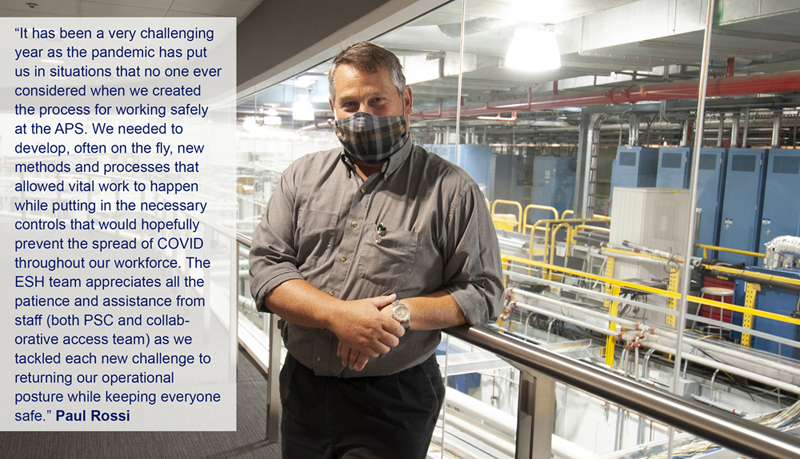
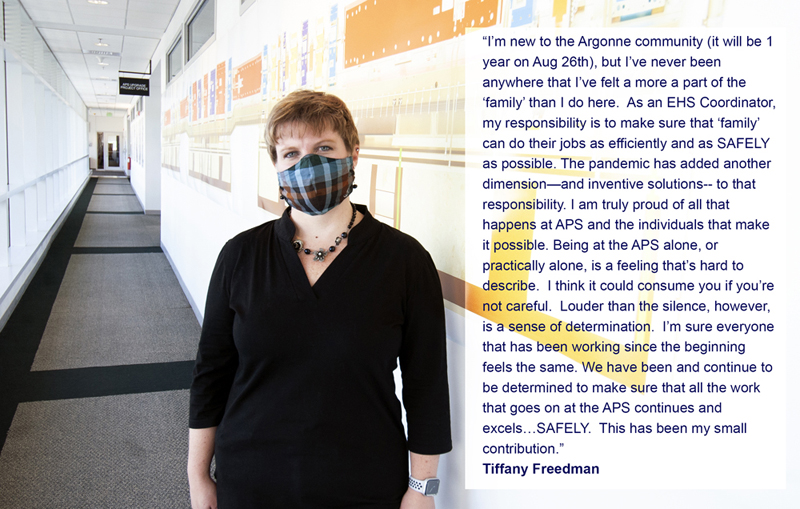
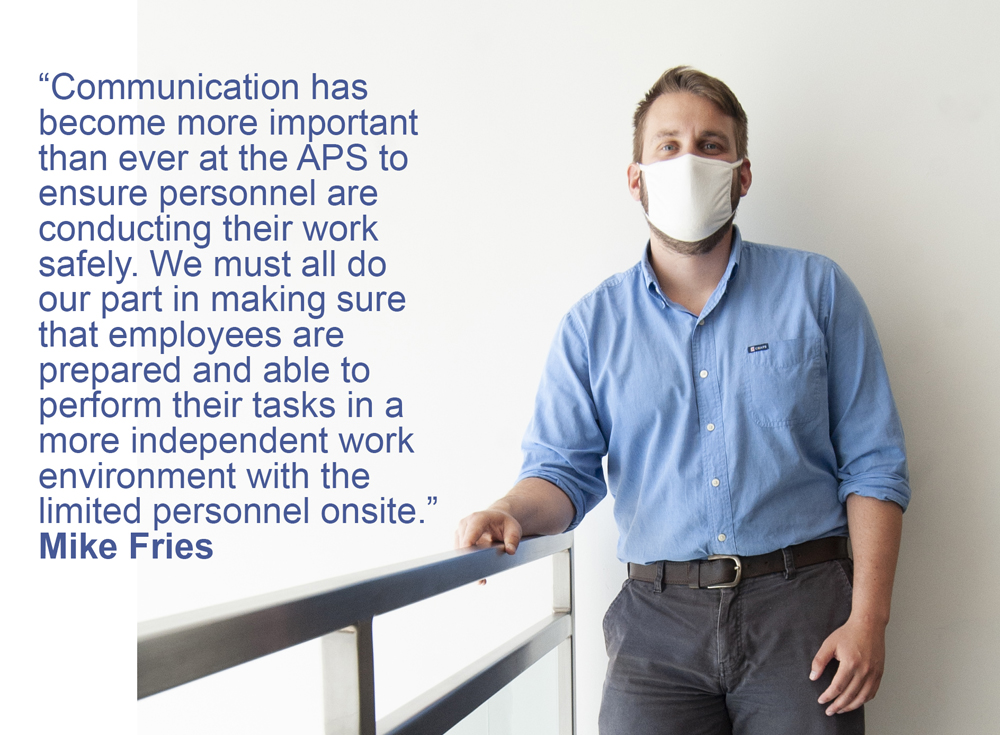
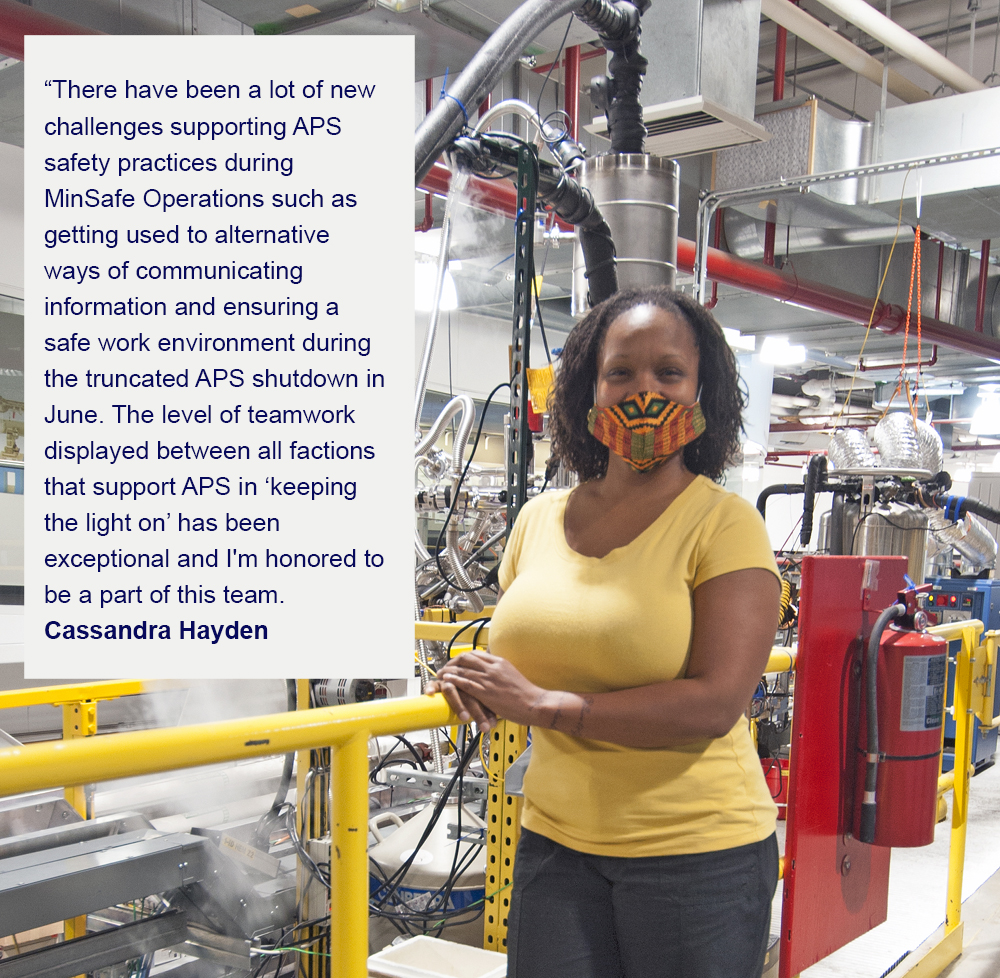
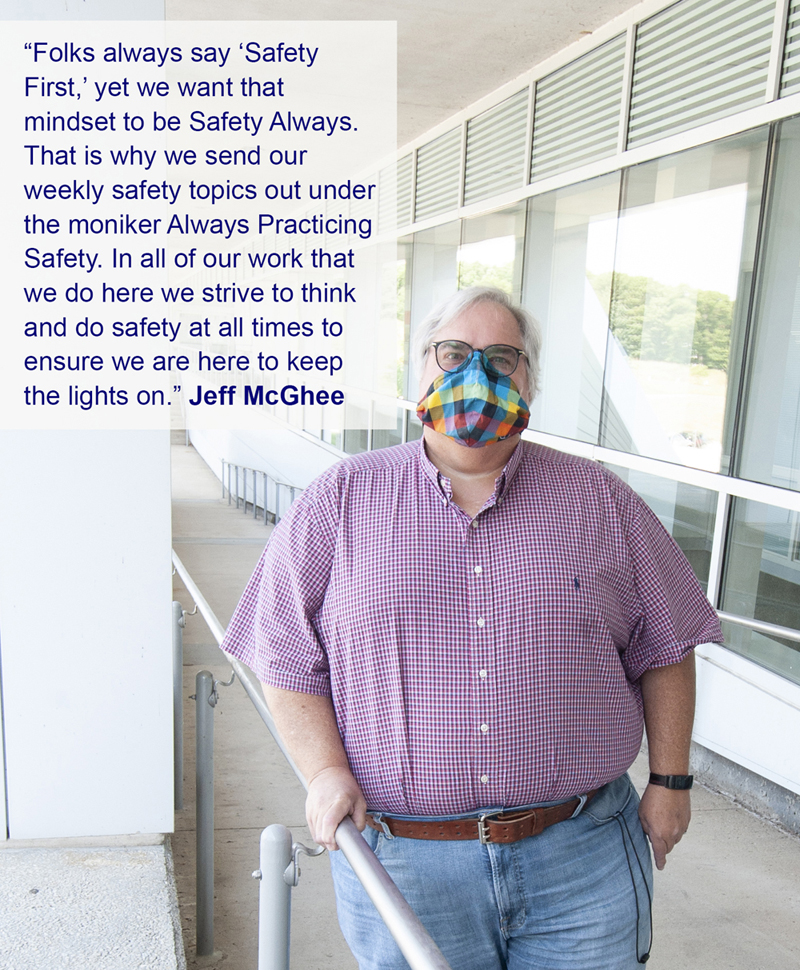

Photography and design: Richard Fenner, APS
